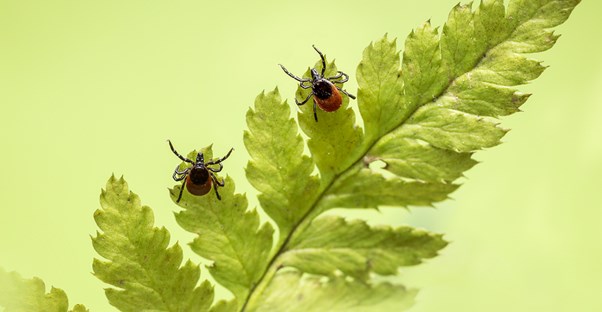5 Diseases You Can Get From Ticks

Summer brings fun in the form of endless outdoor activities, from sunbathing and playing sports to camping in the woods. However, it is important to remember that while you are out enjoying the warm weather, you're not alone. There are plenty of other creatures who enjoy the summertime just as much as we do—including disease-carrying ticks. These are just a few of the diseases you can get from tick bites.
1. Lyme Disease
This is the most common tick-borne illness in North America and Europe. Deer ticks, which feed on the blood of animals and humans, can harbor the bacteria Borrelia burgdorferia and spread it when feeding, which leads to Lyme disease. This condition is characterized by flu-like symptoms and a rash at first, but can later lead to joint pain and neurological problems without treatment. Symptoms will usually clear up quickly following successful diagnosis and prescription of appropriate antibiotics.
2. Rocky Mountain Spotted Fever
This is a bacterial infection that was first identified in the Rocky Mountains, but now it is most commonly found in the southeastern part of the United States. Rocky Mountain spotted fever is usually transmitted by the American dog tick. Early symptoms include high fever, severe headache, and a rash that appears on the ankles and wrists. If diagnosed and treated quickly, the infection will respond well to antibiotics, but without prompt treatment, it has the potential to cause severe damage to your heart and kidneys.
3. Tularemia
Also transmitted by dog ticks in the United States, tularemia is a potentially fatal bacterial infection that attacks the skin, eyes, lymph nodes, lungs, and sometimes internal organs. This disease can also be transmitted through contact with other infected animals, such as rabbits, hares, and rodents or by drinking contaminated water. If caught early enough, tularemia can be cleared up with antibiotics in most circumstances.
4. Babesiosis
This disease is caused by a parasite carried by small ticks and is most common in the northeastern, upper Midwest, and pacific coast of the United States. Symptoms are typically flu-like. Babesiosis can sometimes be life-threatening in older patients, although the infection will clear up on its own in most cases.
5. Powassan Virus
The black-legged tick (also known as the deer tick) carries Powassan virus. This virus currently has no known cure, and there is no specific treatment for sufferers. Most individuals who contracted Powassan virus did so in the northeastern parts of the United States, including the Great Lakes region. With only 60 documented cases in the last ten years, it is particularly rare. This virus affects the central nervous system. It can lead to encephalitis or meningitis, which causes swelling in the brain and spinal cord. One in ten cases of the Powassan virus are fatal, and approximately half of survivors will have permanent neurological damage.
Protect yourself from ticks by keeping your grass clipped short in your yard. Use bug spray when outdoors, and treat any pets with tick prevention medications, especially during the summer months.






